Harmless Wild Animals
Here's the list for non-domestic animals (not humans though) that don't normally live in or are not associated to living in cities (unlike mice, rats, etc). It doesn't have to be modern animals, it can be extinct species, but only recently extinct ones like dodos and such that humans encountered, not long extinct ones like non-avian dinosaurs. Feel free to add mainly harmless wild animals!The Top Ten
1 Manatee
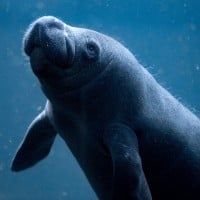

Cute creatures
2 Dugong
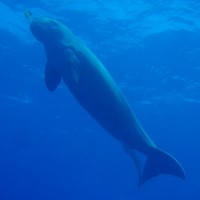

3 Tapir
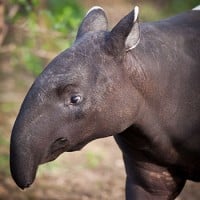 A tapir is a large, herbivorous mammal, similar in shape to a pig, with a short, prehensile nose trunk.
A tapir is a large, herbivorous mammal, similar in shape to a pig, with a short, prehensile nose trunk.
 A tapir is a large, herbivorous mammal, similar in shape to a pig, with a short, prehensile nose trunk.
A tapir is a large, herbivorous mammal, similar in shape to a pig, with a short, prehensile nose trunk.
4 Wallaby
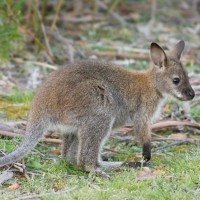

5 Dodo
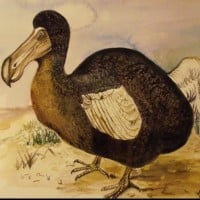 The dodo bird is an extinct flightless bird that was native to the island of Mauritius, which is east of Madagascar in the Indian Ocean. The birds were first seen by Portuguese sailors about 1507 and were killed by humans and their introduced animals, leading to their exinction in 1681.
The dodo bird is an extinct flightless bird that was native to the island of Mauritius, which is east of Madagascar in the Indian Ocean. The birds were first seen by Portuguese sailors about 1507 and were killed by humans and their introduced animals, leading to their exinction in 1681.
 The dodo bird is an extinct flightless bird that was native to the island of Mauritius, which is east of Madagascar in the Indian Ocean. The birds were first seen by Portuguese sailors about 1507 and were killed by humans and their introduced animals, leading to their exinction in 1681.
The dodo bird is an extinct flightless bird that was native to the island of Mauritius, which is east of Madagascar in the Indian Ocean. The birds were first seen by Portuguese sailors about 1507 and were killed by humans and their introduced animals, leading to their exinction in 1681. Shame we can't resurrect them.
Everyone wants the dinosaurs but are you just obsessed with Jurassic Park? Rather dangerous to resurrect.
6 Moa
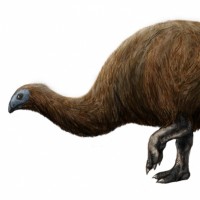

This bird was pretty harmless
7 Hedgehog
 A hedgehog is any of the spiny mammals of the subfamily Erinaceinae, in the eulipotyphlan family Erinaceidae.
A hedgehog is any of the spiny mammals of the subfamily Erinaceinae, in the eulipotyphlan family Erinaceidae.
 A hedgehog is any of the spiny mammals of the subfamily Erinaceinae, in the eulipotyphlan family Erinaceidae.
A hedgehog is any of the spiny mammals of the subfamily Erinaceinae, in the eulipotyphlan family Erinaceidae.
8 Sugar Glider
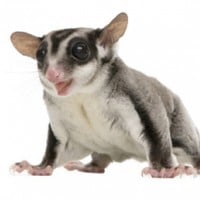 The sugar glider is a small, omnivorous, arboreal, and nocturnal gliding possum belonging to the marsupial infraclass.
The sugar glider is a small, omnivorous, arboreal, and nocturnal gliding possum belonging to the marsupial infraclass.
 The sugar glider is a small, omnivorous, arboreal, and nocturnal gliding possum belonging to the marsupial infraclass.
The sugar glider is a small, omnivorous, arboreal, and nocturnal gliding possum belonging to the marsupial infraclass.
9 Tortoise
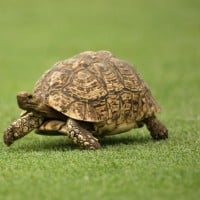

10 Kiwi
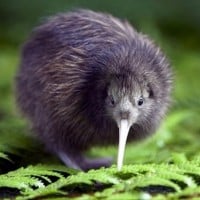 Native to New Zealand, the Kiwi is a flightless bird known for its small size and long, slender beak. The beak is used to probe the ground for insects, its primary diet. The Kiwi has a keen sense of smell, which is unusual among birds.
Native to New Zealand, the Kiwi is a flightless bird known for its small size and long, slender beak. The beak is used to probe the ground for insects, its primary diet. The Kiwi has a keen sense of smell, which is unusual among birds.
 Native to New Zealand, the Kiwi is a flightless bird known for its small size and long, slender beak. The beak is used to probe the ground for insects, its primary diet. The Kiwi has a keen sense of smell, which is unusual among birds.
Native to New Zealand, the Kiwi is a flightless bird known for its small size and long, slender beak. The beak is used to probe the ground for insects, its primary diet. The Kiwi has a keen sense of smell, which is unusual among birds.The Contenders
11 Tasmanian Devil
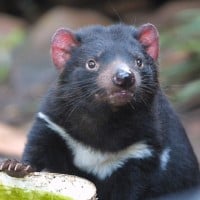 The Tasmanian devil is a carnivorous marsupial native to the island of Tasmania in Australia. It is characterized by its stocky build, black fur, and powerful jaws. Tasmanian devils are known for their fierce temperament and distinctive vocalizations that include screeches and growls. They have a strong bite that enables them to consume bone and cartilage, giving them a reputation as scavengers. Sadly, the Tasmanian devil population has been threatened by a contagious cancer known as Devil Facial Tumor Disease, which has led to a significant decline in their numbers. Conservation efforts are in place to help protect this iconic species.
The Tasmanian devil is a carnivorous marsupial native to the island of Tasmania in Australia. It is characterized by its stocky build, black fur, and powerful jaws. Tasmanian devils are known for their fierce temperament and distinctive vocalizations that include screeches and growls. They have a strong bite that enables them to consume bone and cartilage, giving them a reputation as scavengers. Sadly, the Tasmanian devil population has been threatened by a contagious cancer known as Devil Facial Tumor Disease, which has led to a significant decline in their numbers. Conservation efforts are in place to help protect this iconic species.
 The Tasmanian devil is a carnivorous marsupial native to the island of Tasmania in Australia. It is characterized by its stocky build, black fur, and powerful jaws. Tasmanian devils are known for their fierce temperament and distinctive vocalizations that include screeches and growls. They have a strong bite that enables them to consume bone and cartilage, giving them a reputation as scavengers. Sadly, the Tasmanian devil population has been threatened by a contagious cancer known as Devil Facial Tumor Disease, which has led to a significant decline in their numbers. Conservation efforts are in place to help protect this iconic species.
The Tasmanian devil is a carnivorous marsupial native to the island of Tasmania in Australia. It is characterized by its stocky build, black fur, and powerful jaws. Tasmanian devils are known for their fierce temperament and distinctive vocalizations that include screeches and growls. They have a strong bite that enables them to consume bone and cartilage, giving them a reputation as scavengers. Sadly, the Tasmanian devil population has been threatened by a contagious cancer known as Devil Facial Tumor Disease, which has led to a significant decline in their numbers. Conservation efforts are in place to help protect this iconic species. Since there's not a single record of a wild Tasmanian devil hurting a human.
12 Emu
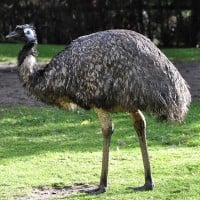 The emu is the second-largest living bird by height, after its ratite relative, the ostrich. It is endemic to Australia where it is the largest native bird and the only extant member of the genus Dromaius.
The emu is the second-largest living bird by height, after its ratite relative, the ostrich. It is endemic to Australia where it is the largest native bird and the only extant member of the genus Dromaius.
 The emu is the second-largest living bird by height, after its ratite relative, the ostrich. It is endemic to Australia where it is the largest native bird and the only extant member of the genus Dromaius.
The emu is the second-largest living bird by height, after its ratite relative, the ostrich. It is endemic to Australia where it is the largest native bird and the only extant member of the genus Dromaius. Emus ARE dangerous
13 Serval
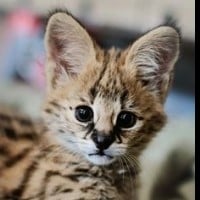 The serval is a medium-sized wild cat native to Africa. It is recognized for its distinctive coat, featuring a tawny background with bold black spots and stripes. Servals have a slender body, long legs, and large ears with excellent hearing capabilities. They are adapted to a semi-aquatic lifestyle, often found near wetlands or marshes. Servals are skilled hunters, preying on a variety of small animals like rodents, birds, and amphibians. They are known for their unique hunting technique of leaping into the air to catch birds in flight. Despite their striking appearance, servals are elusive creatures that are rarely seen in the wild.
The serval is a medium-sized wild cat native to Africa. It is recognized for its distinctive coat, featuring a tawny background with bold black spots and stripes. Servals have a slender body, long legs, and large ears with excellent hearing capabilities. They are adapted to a semi-aquatic lifestyle, often found near wetlands or marshes. Servals are skilled hunters, preying on a variety of small animals like rodents, birds, and amphibians. They are known for their unique hunting technique of leaping into the air to catch birds in flight. Despite their striking appearance, servals are elusive creatures that are rarely seen in the wild.
 The serval is a medium-sized wild cat native to Africa. It is recognized for its distinctive coat, featuring a tawny background with bold black spots and stripes. Servals have a slender body, long legs, and large ears with excellent hearing capabilities. They are adapted to a semi-aquatic lifestyle, often found near wetlands or marshes. Servals are skilled hunters, preying on a variety of small animals like rodents, birds, and amphibians. They are known for their unique hunting technique of leaping into the air to catch birds in flight. Despite their striking appearance, servals are elusive creatures that are rarely seen in the wild.
The serval is a medium-sized wild cat native to Africa. It is recognized for its distinctive coat, featuring a tawny background with bold black spots and stripes. Servals have a slender body, long legs, and large ears with excellent hearing capabilities. They are adapted to a semi-aquatic lifestyle, often found near wetlands or marshes. Servals are skilled hunters, preying on a variety of small animals like rodents, birds, and amphibians. They are known for their unique hunting technique of leaping into the air to catch birds in flight. Despite their striking appearance, servals are elusive creatures that are rarely seen in the wild.
14 Ocelot
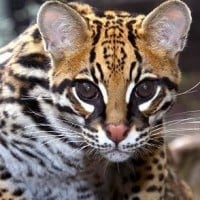 The ocelot, also known as the dwarf leopard, is a wild cat distributed extensively within South America including the islands of Trinidad and Margarita, Central America, and Mexico. It has been reported as far north as Texas.
The ocelot, also known as the dwarf leopard, is a wild cat distributed extensively within South America including the islands of Trinidad and Margarita, Central America, and Mexico. It has been reported as far north as Texas.
 The ocelot, also known as the dwarf leopard, is a wild cat distributed extensively within South America including the islands of Trinidad and Margarita, Central America, and Mexico. It has been reported as far north as Texas.
The ocelot, also known as the dwarf leopard, is a wild cat distributed extensively within South America including the islands of Trinidad and Margarita, Central America, and Mexico. It has been reported as far north as Texas.
15 African Wildcat
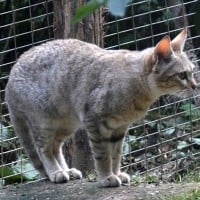

16 Pelican
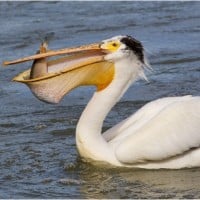

BAdd New Item